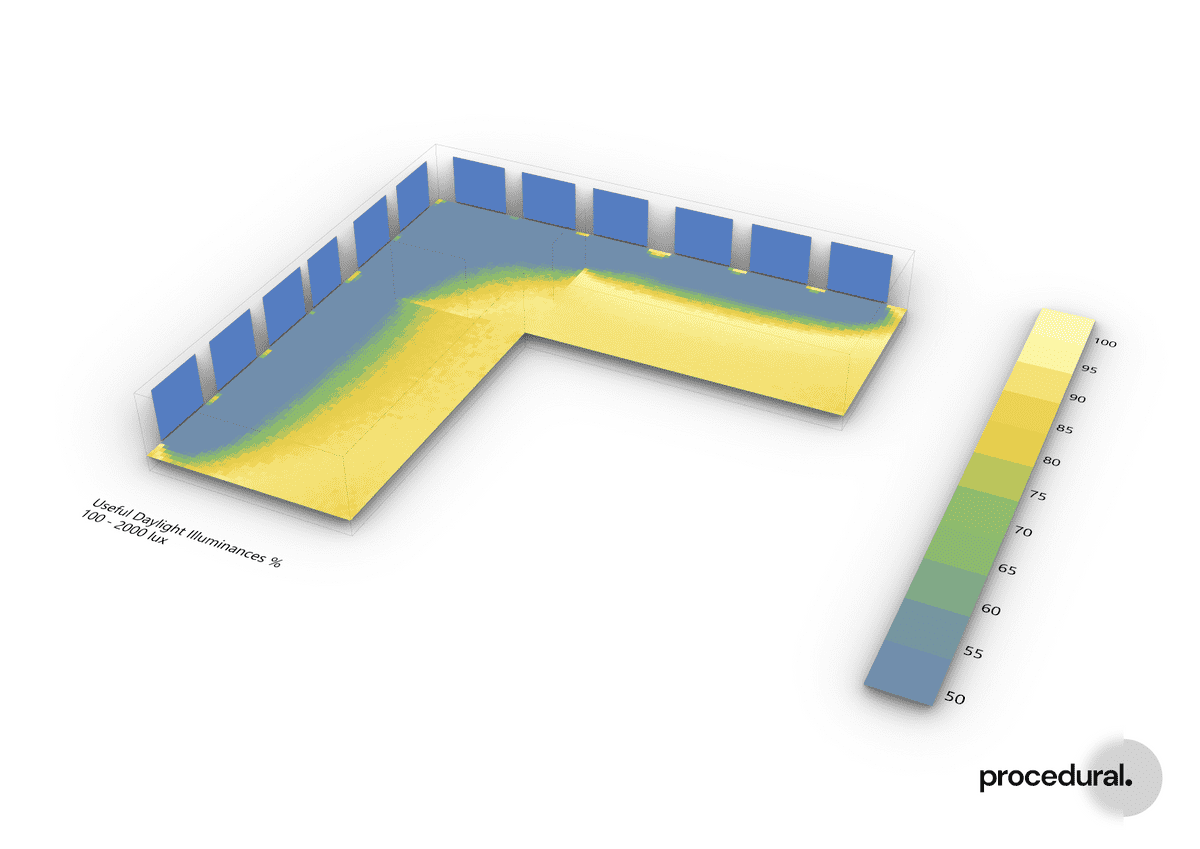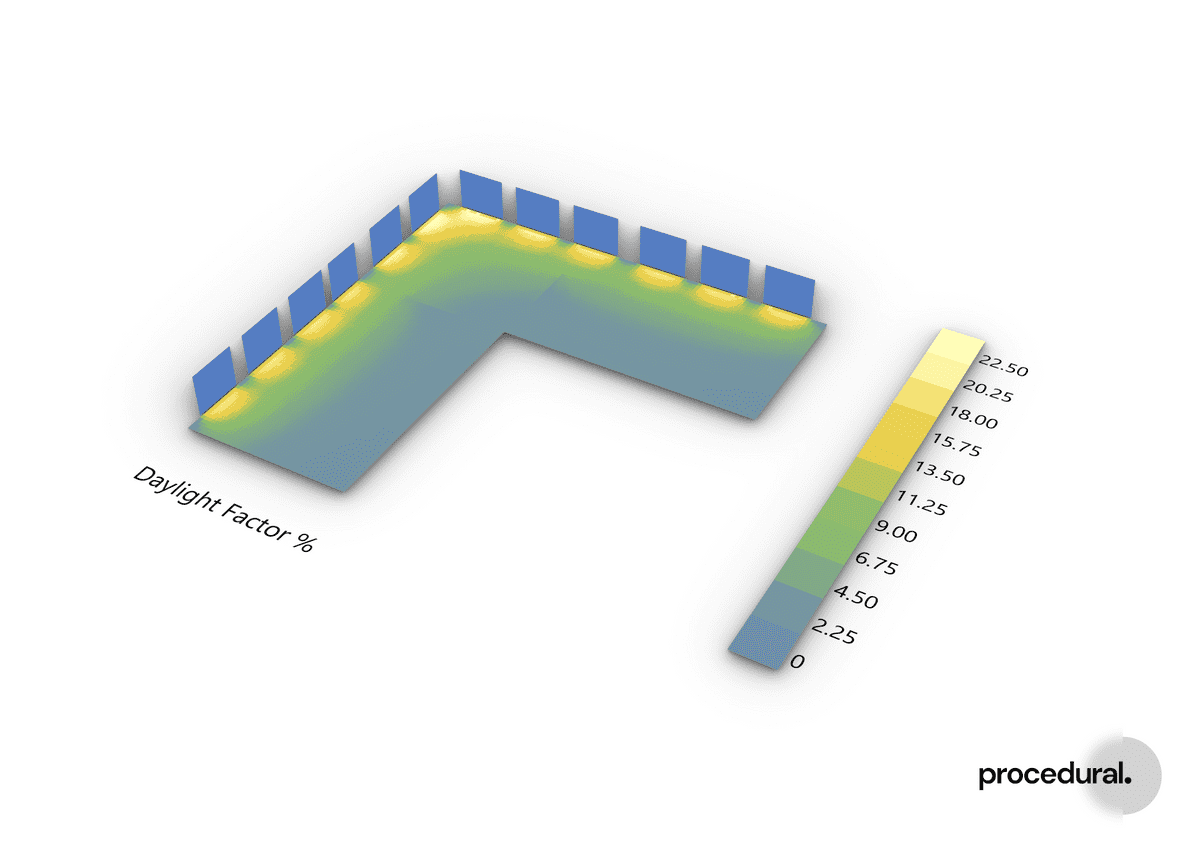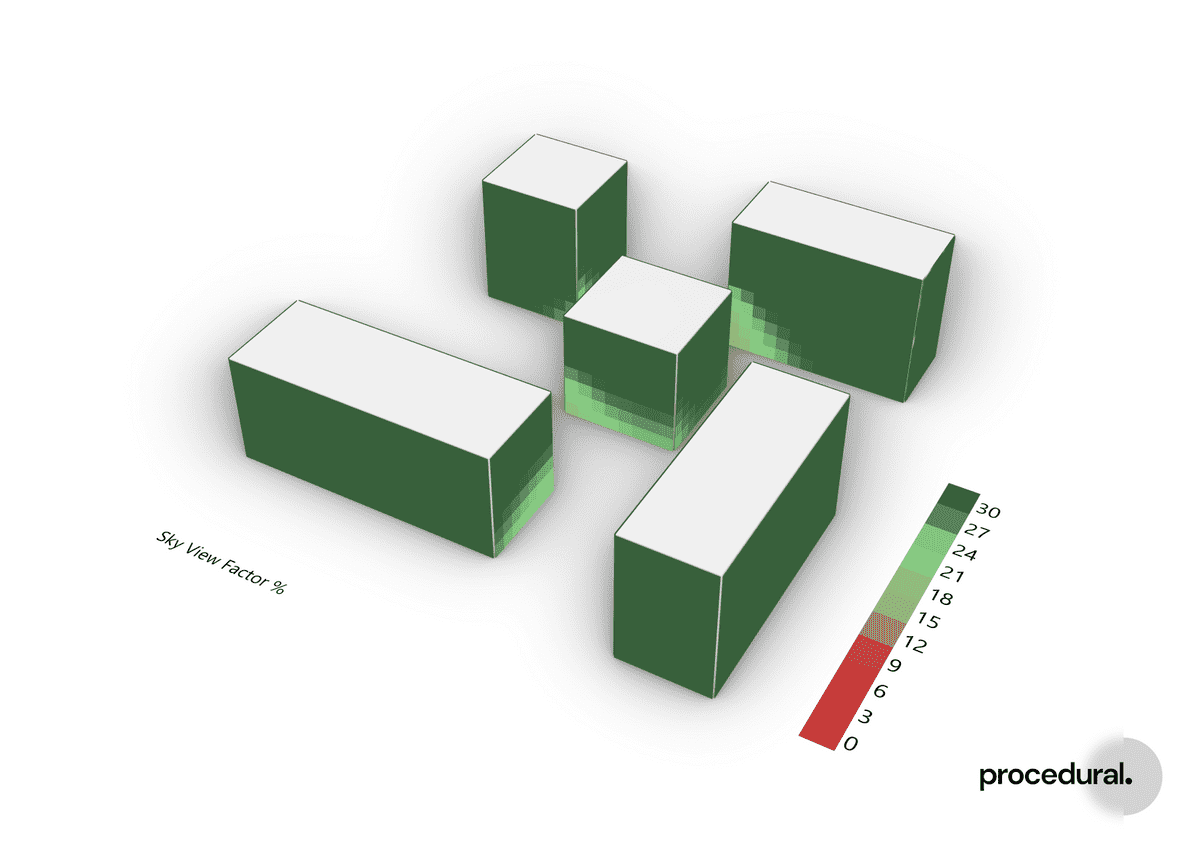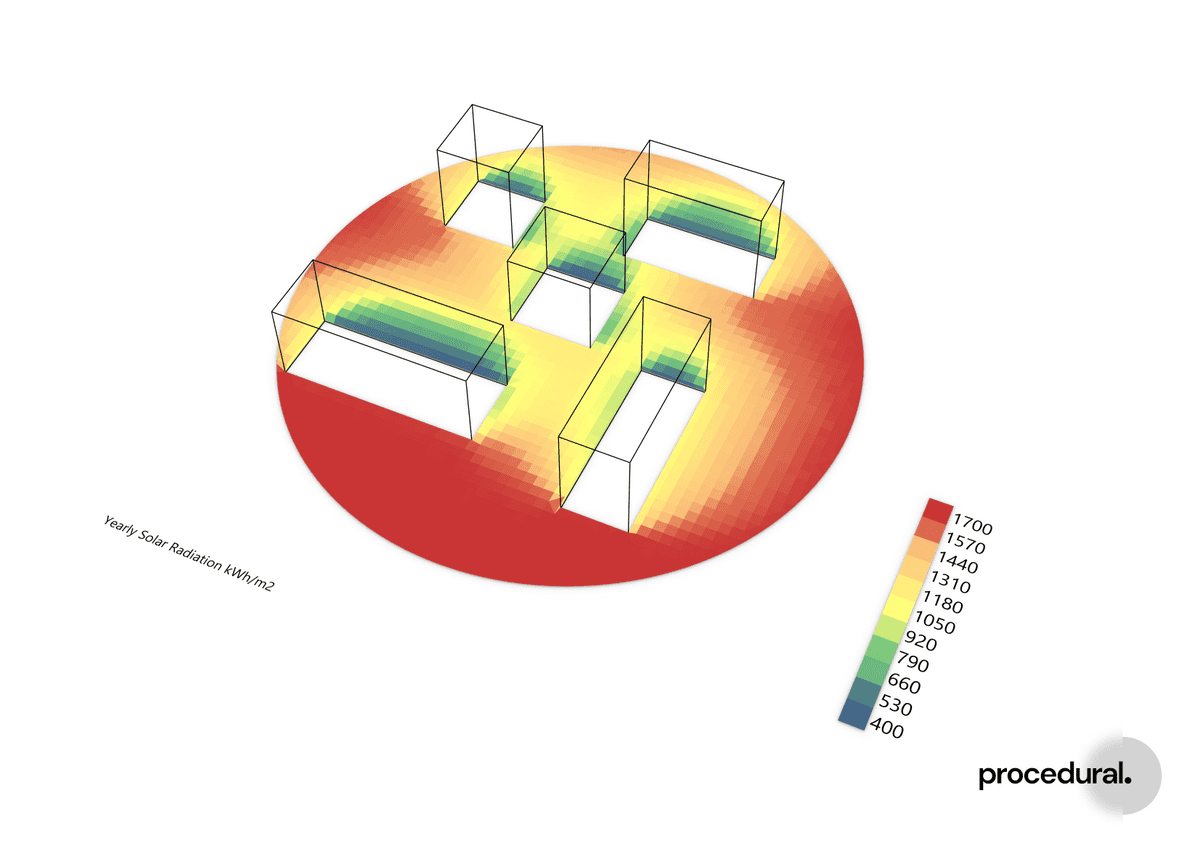Documentation
CFD
Tutorials
UI
Daylight Analyses
If you are in doubt of which daylight analysis to run, then we have collect a list of the most used analyses. Every analysis type comes with advantages and disadvantages.
Annual Daylight
The annual daylight simulation is for everybody who wants to know the actual illuminance values throughout the year in a room or building.
The simulation takes into account site location, building and window orientation, context and material properties.
It is the most accurate method of estimating the daylight conditions in a room.
The annual daylight simulation calculates the illuminance values (in lux) for every hour of the year for each analysis point.
That is a very large data set and typically you would want to aggregate that into a daylight metric.
Daylight Metrics
Read more about Daylight Metrics
Useful Daylight Illuminances
Useful Daylight Illuminances (UDI) tells you the percentage of the occupied time, where a specific point lies in a certain illuminance range. Daylight illuminances between i.e. 100 and 2000 lux are considered useful.
Daylight Autonomy
Daylight Autonomy calculates the percentage of occupied time, that a specific point meets a certain illuminance threshold.
Spatial Daylight Autonomy
Spatial Daylight Autonomy is typically used in relation to governmental requirements or sustainability rating schemes. It calculates the percentage of the room area that meets a certain requirement, e.g. 50% Daylight Autonomy. That way it is easy to asses, whether a whole building has good daylight conditions.
Daylight Factor
Daylight Factor is a relatively lightweight calculation, which makes it well-fitted to the early design stage, when the geometry changes rapidly, and the simulation should be able to follow the pase. Daylight Factor is however not assessing the actual daylight in a room, but rather the "daylight availability". It is a purely geometric calculation, and it doesn't take into account site location or orientation of the geometry and/or windows.
Sky View Factor
A Sky View Factor analysis shows you how much of the sky dome a point on the facade can see. That gives an indication of how much daylight will be available inside the building. Sky View Factor is very similar to Daylight Factor. It doesn't take into account location or orientation, but is purely a geometric calculation.
Solar Radiation
An annual radiation analysis shows you how much radiation you will receive on a set of surfaces throughout the year. It can be used to e.g. determine where to locate PV panels to produce the most kWh from them.





